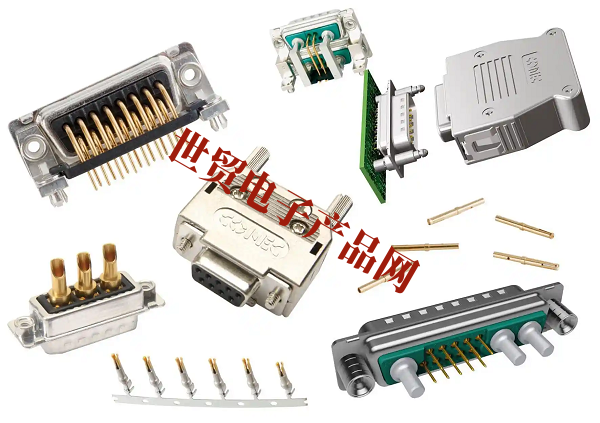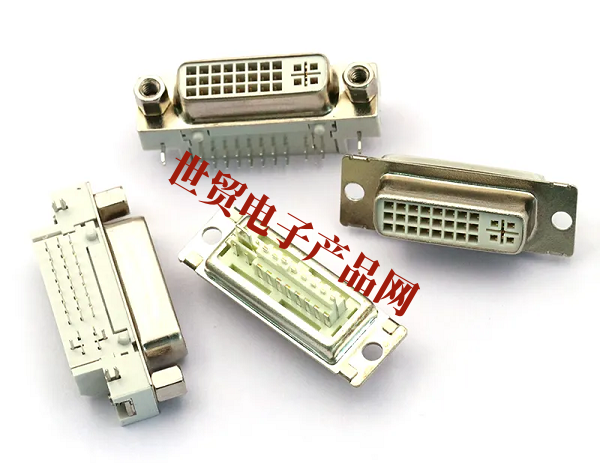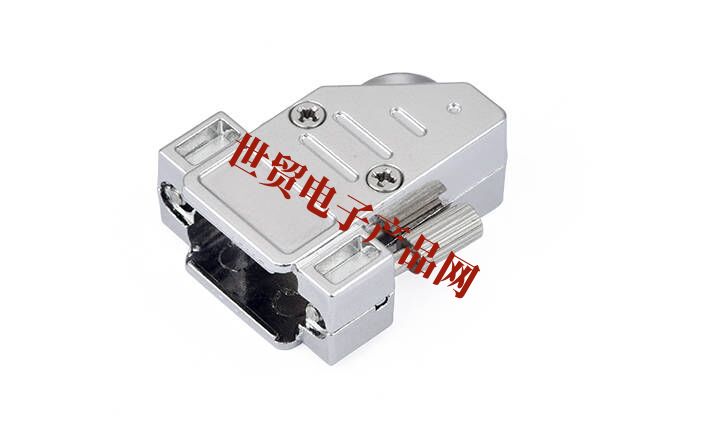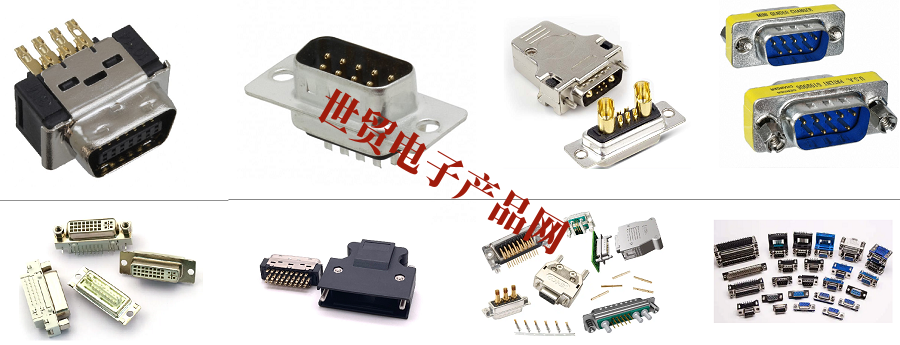Categorization:Product Information
Specializing in the production / sale of D-type electronic connectors - to provide the industry's most complete range of D-type connectors; mainly to provide five types of D-type connectors: First, stamping molding D-type connectors; Second, mechanical D-type connectors; Third, crimp D-type connectors; Fourth, IDC D-type connectors; Fifth, filtering D-type connectors.
1、What is D-type electronic connector? :
D-type connectors, also known as rectangular connectors (D-type connectors / rectangular connectors ) are converted from circular connectors in order to improve the line density of the connector contact pair. Used in the electrical connection between electronic equipment, electronic equipment and cables. Modern communications equipment, mainly with rectangular connectors to achieve electrical connections between the cabinet and cabinet, divided into three categories: 1, cabinet with shell positioning small rectangular connectors. 2, crimp contact pairs of rectangular connectors. 3, shell positioning ultra-small rectangular connectors. D-type connectors are divided into five main types: a stamping molding D-type connector: stamping molding D-type connector pins and sockets made of flat metal sheet ( Usually tin-plated brass) made of and formed into a cylindrical shape of the contacts, which is the most commonly used contact type in commercial connectors, usually with 50 mating cycles. Second, mechanical D-type connector: mechanical D-type connector contacts are made of solid metal (usually gold-plated copper), which is designed for demanding applications and high-quality contacts, and these connectors can be more than 500 mating cycles. Third, crimp D-type connectors: crimp contact D-type connectors in high-end harsh environments, especially in the military market is very popular, usually crimp soldering as the choice of high-end terminals. Fourth, IDC D-type connectors: IDC D-type connectors are almost always the easiest to disconnect and have the added advantage of fast assembly, which makes them an extremely popular choice for simple data transmission. The main disadvantage is that the lead wire is limited, the choice of cable is limited to ribbon cable. V. Filtered D-type connectors: Filtered connectors provide greater EMI / RFI protection. The connector has a planar array of ceramic capacitors and a ferrite inductor to protect against interference and is typically used in environments where signal clarity is critical. By far, connectors with filters are the most expensive and must be filtered if interference is to be an option.

---------------------------------------------------------------------------------------------------
2、How to buy D-type electronic connector? :
Before purchasing a d-type connector, we first need to get a clear picture of the current-carrying and voltage performance of the d-type connector we need. This is because the current loading force of the connector is generally determined by the thickness of the wire and the contacts, while the rated voltage is determined by the contact spacing and insulation material, so make sure that the contacts conform to the support conductor size to avoid overheating and other undesirable conditions.
It is important to know the current rating and operating voltage of the connector. Because test ratings and data can refer to the manufacturer's standards, but different manufacturers use test standards are very different, so when looking at the current rating, you should first look at the temperature rise specifications of the connector through the datasheet, which will give you a full picture of the specific performance of the d-type connector.
This is because there are more types of connector terminations, ranging from those that use solder contacts to those that use crimping for ease of maintenance on site, such as compression terminals for winding connections, direct connections, loop connections and eyelet connections, among others. And the type of connector termination required also depends on the size and type of cable as well as the voltage and current conditions supplied.
Because the use of the connector is affected by moisture, temperature, vibration and shock and other application environments, so you need to be very careful when choosing d-type connectors, to clarify the mechanical and environmental performance of the d-type connector and the type of shell, to ensure that there is a reliable connection performance, to avoid short-circuiting and other undesirable factors.

---------------------------------------------------------------------------------------------------
3、What are the characteristics of D-type connector? :
The most common type of D-type connector is the D-Sub connector, so called because of the D-shaped housing on the mating end and the relatively high interconnection density at the time these devices were introduced. The products in this family are described as "connectors", which in their entirety consist of electrical contacts and an insulation system to hold them in place. While these devices can also be used for solder terminated cable installations, they are typically used for circuit board mounting applications.D-sub connectors, also known as D-sub miniature, are analog signal interface connectors used to make connections between cables and printed circuit boards. It is also known as a d-type connector because of its unique D-shield shape. Today to D-Sub connector as an example to understand the main features of the D-type connector:
D-Sub connectors are bulky, especially when compared to newer connectors, and are difficult to connect and disconnect in tight spaces. Since the pins inside the D-Sub connector housing are exposed, they are susceptible to bending or breaking. A better way to avoid damage to the pins is to protect them with a protective cover for the D-sub plug or socket to prevent them from being damaged when not mated. In addition, male-to-female converters and female header protectors help reduce the stress on the connector caused by repeated plugging and unplugging.
D-Sub connectors can be mated without the use of wing screws, but this type of friction fit does not guarantee a consistent mating fit. On the other hand, while wing screws provide a stronger connection, they increase the amount of time required to plug and unplug the connector.
There are still many devices with DB9 ports, and a variety of optional technologies exist for converting legacy products configured with D-sub connectors. With converters between RS232/422/485 and USB, Ethernet and other technologies, you can still use older serial devices for a wide range of modern computers!
---------------------------------------------------------------------------------------------------
4, our production / sales of D-type electronic connector products part of the physical picture (picture for reference only):

---------------------------------------------------------------------------------------------------
5、How to buy or learn about D-type electronic interconnect connectors products? :
Manufacture/sell D-type electronic interconnect connectors; If you want to buy or know what D-type electronic interconnect connectors product solutions we can provide, please feel free to contact us through the following ways.